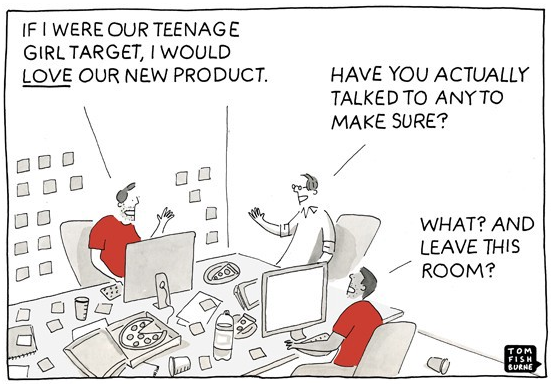I presented and moderated what turned out to be a very vibrant discussion last night with the HubSpot User Group at HubSpot’s headquarters in Cambridge.
I was told by Tony Paille, the spirited HUG leader, that it was the second biggest user group event of all time, only trailing a Q&A with Dharmesh Shah (who clearly deserves to be the bigger draw!)
It's always been about your integrated marketing mix. Audience getting thirsty looking at those mixed drinks. Photo Credit: Mark Goloboy; Back of Head Credit: Tony Paille (he of the ugly sweater)
As I was hit up several times with the inevitable question “can we get the slides?”, here they are below, as well as a link to an earlier post that formed a big chunk of the content: Stop debating Inbound vs. ABM and starting integrating your marketing (& that means with sales too).
Beyond the nitty gritty details of how to connect ABM & Inbound (which you can read about in the article above and/or the deck), here are my top four takeaways from the evening:
#1 – Inbound practitioners are on board with adopting a multi-channel, integrated marketing approach
It was interesting that in the course of the conversation, we had group members talk about their effective use of marketing channels such as events, direct mail and online advertising.
In the “early days of Inbound”, the narrative -- or at least how it was internalized by many -- was that Inbound required an exclusive commitment to prospects finding you, and not the other way around. Marketing channels such as these, were the enemy.
It’s good to see that many Inbounders are now realizing the vision of Inbound as a centerpiece for a marketing program, but rounded out with marketing channels such as events, direct mail and advertising. The key is that you can still be helping people through these marketing channels - providing you are delivering the right message to the right audience. These marketing channels can amplify inbound and are not the enemy.
The key point here is that don't define Inbound as a marketing channel (being 'discovered' through search), but rather an approach ('helping people'), and if you apply the approach of helping people to marketing channels such as events, direct mail or advertising - you can make those channels successful for you.
One group member noted events are their top performing marketing channel (and we’ve also seen it as a key producer at Bedrock Data). I also took the group through the power of relevant, well targeted advertising and how it can serve to ignite inbound marketing as the intersection point between ABM & Inbound.
#2 – The lasting impact of Inbound, above and beyond any specific marketing strategy, will be the rallying together of like-minded professionals around a movement
This is a corollary of point #1 – with marketing channels blending and inbound not being defined as an exclusive marketing channel, but rather a mindset or a movement, it’s this movement and alignment between like-minded professionals that will be the lasting impact - centered around helping people through marketing.
There’s no other movement in marketing that can fill 17,000+ professionals at an event like Inbound did this past September. It's also what sets Inbound apart from other "movements", including account based marketing.
#3 – There’s power in a vibrant user group meet up
The highlight of the experience for me was the awesome group discussion this topic prompted. Great questions – great answers coming from other group members. I didn’t see a single person on their phone (except live tweets), and in fact we ran overtime and everyone stayed, butts in seats.
One question came from the audience – “What’s your advice for getting started with ABM?”
So I asked back – “Do you have good alignment between sales and marketing?”
“Yes we do,” they said – one was the marketer, one was sales, I believe.
My next question: “Do you have a target account list identified?”
Got “Yes we do” to that as well.
I’m thinking – “OK that have the two most important boxes ticked.”
Mark Goloboy then jumped in with the advice, “The best thing to do then is just get started.” Absolutely!
#4 – Lots of curiosity out there about #NoForms
One of the hot topics of Q&A was input on #NoForms (speaking of movements, the hottest one around marketers).
One question was – does no forms really help you generate more leads? I summarized some of my findings at Bedrock Data of Five Ways Drift Helped Us Engage with More Web Visitors in the First Week, specifically:
Accelerating the typical back-and-forth with the “contact sales” leads and getting those engaged with sales immediately (and not running the risk of having competitors respond faster than you).
And
The web visitor who has questions and “wants to remain anonymously”, but getting them comfortable enough to share their information through a chat exchange – and often that these folks on your website, learning, because they have been directed there by a boss or colleague.
And once again it comes back to - helping people.
For those who attended (or didn’t) – great spending the evening with you and let’s keep hanging out on LinkedIn or Twitter.





